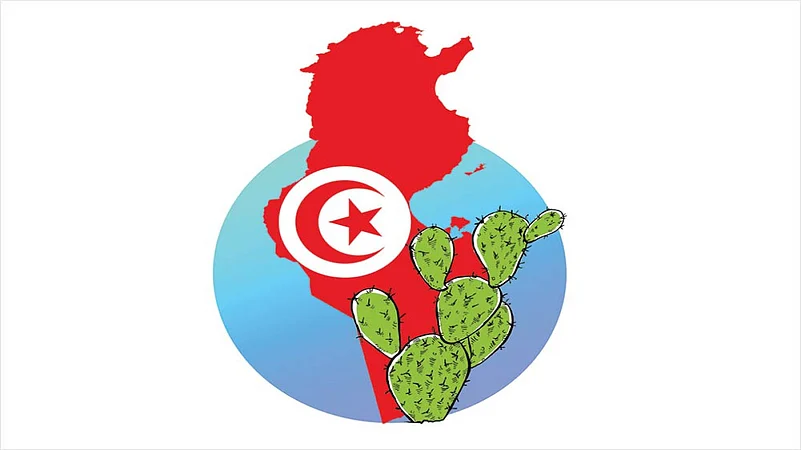Nestled between Libya on the east, Algeria on the west and the Mediterranean Sea on the north, Tunisia is a country of about 12 million people known for its beaches, and Punic and Roman ruins and monuments, including six Unesco world heritage sites. Many know it as Carthage, the land of Hannibal, who shook the Roman empire when he marched elephants over the Alps in 218 BC and defeated the Romans at Cannae, only to be defeated in the Second Punic War at home by Roman general Scipio Africanus in 206 BC. Tunisia is also the place where the Arab Spring erupted after a fruit-seller’s self-immolation in 2010 channelled public anger against President Ben Ali, finally toppling his regime. The wave of anger then spread across the Arab world. Thereafter, Tunisia started on the path of political transformation; now it is a liberal, modern, country undergoing a democratic transition.
The Arabs have had trade relations with India (Al Hind) since ancient times, much before the advent of Islam. Many words in Hindi/Urdu have roots in Arabic. The word ‘Hindi’ in Arabic means ‘Indian’. However, in Tunisia, ‘Hindi’ represents Opuntia, a prickly pear. The fleshy fruit, with tough leathery skin speckled with small thorns and hard pellet-like seeds dispersed inside, grows on a cactus plant. The fruit is impossible to handle with hands but once peeled away, reveals a sweet and delicious core—a delicacy eaten in summer, from August to October. The hardy cactus is often grown around farms and houses as fence; most often it grows in the wild. However, no one could explain why the fruit is called ‘Hindi’. ‘It’s always been called Hindi, goes the usual answer.
Chapati is a staple of wheat eaters all across the subcontinent, but for a Tunisian, chapati is a flat and fluffy, round, soft bread that is eaten by stuffing it with Machouia salad, chicken, fish or even an omelette. Chapati is just one of the stuffed breads, besides the popular Malfoof and Tabouna, for a quick meal. However, unlike Indian chapati, the Tunisian chapati is made of white flour and treated more as street food. It comprises a Okla Khafeefa—a light meal rather than a full meal. The best thing is that it is available readymade and no Tunisian household spends time in kneading the dough, rolling and cooking chapatis, unlike Indian chapatis.
And sari? Well, the Indian sari has come to define India and Indian womanhood all over the world. But in Tunisia, ‘safsaree’ (also called saree in short) means a large piece of cloth covering the whole body which is usually made of cotton or linen. However, it is now worn only by elderly women; the younger Tunisians having taken a fancy for Western clothes and dresses, besides the ubiquitous jeans. The Tunisian safsaree is characterised by it being held by hand in a fold near the throat and, unlike the Indian sari: is almost identical for each wearer. To a large extent, it is a self-effacing garment. Of course, the Indian sari, ‘six yards of pure magic’, can range from being very conservative to very bold just by the way it is draped or by its accompaniments. While the Indian sari has not lost any of its glamour, the Tunisian safsaree is losing out to rapid westernisation in youthful Tunisia. Considered too conservative, traditional and boring, it is confined to the older generation.
India and Tunisia have a lot in common in terms of shared values such as democracy, rule of law, a free press, an active civil society and liberal attitudes. Both countries have assimilated external influences and merged them to form an identity that is typically Indian and Tunisian. Much like the rich Indian cultural heterogeneity, Tunisia is a palimpsest of Punic, Roman, Byzantine, Arab, Turkish, French and the local Amazigh cultures. Often referred to as a ‘Carrefour of Civilizations’, Tunisia today presents the picture of a liberal society that has compulsory education, has banned practices like polygamy, divorce by triple talaq, as well as full hijab from schools. It provides equal opportunities for women. This fusion of cultures and influences creates a unique identity that is defined as ‘Tounsi’. The country rightfully boasts of an inimitable Tunisian cuisine, a Tunisian language and its impending ‘tryst with democratic destiny’ in an unfolding democratic transition.























